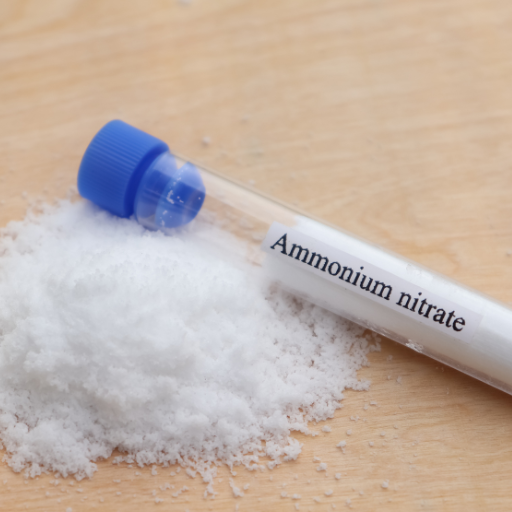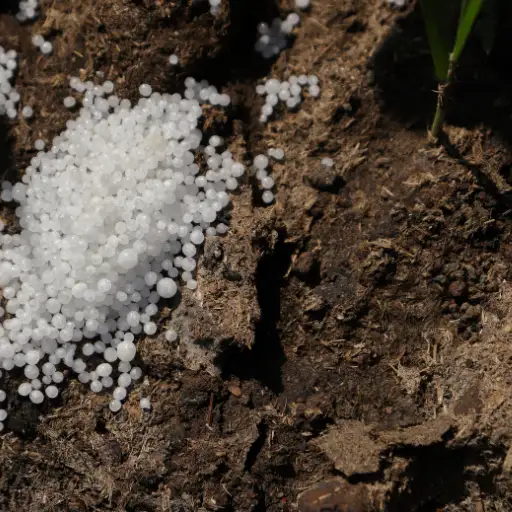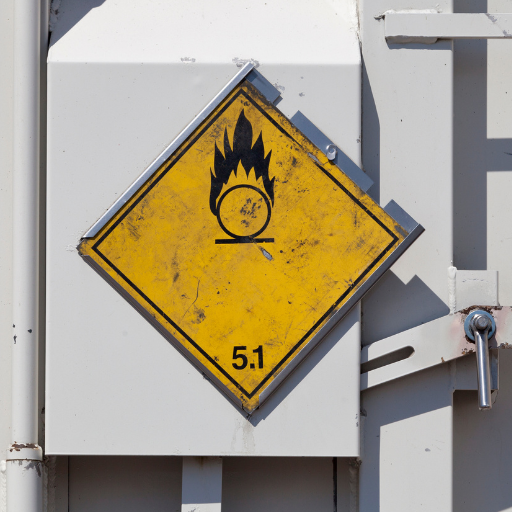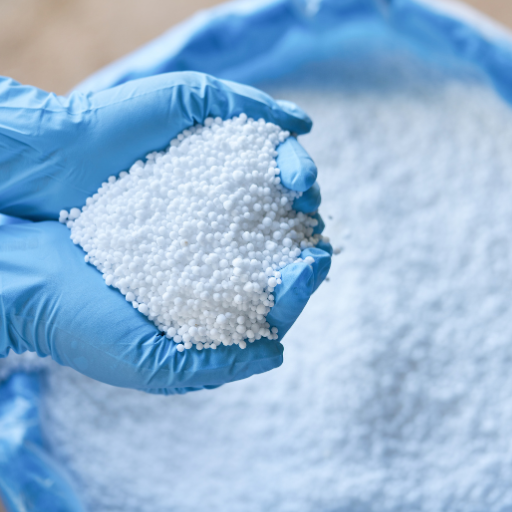For so long, the ammonium nitrate has been considered a staple in farming for its ability to increase soil fertility and produce high crop harvests. Even as it has been proven to be beneficial, people have raised concerns over issues of safety and environmental impact about the use of ammonium nitrate in fertilizers due to regulatory policies. The research article examines the current status of ammonium nitrate in modern agriculture by looking at its continued use and emerging options. This report will delve into scientific, economic and regulatory perspectives with a view to establish how ammonium nitrate fits within contemporary agriculture practices today while reflecting on what later generation may bring for this chemical which was once heavily relied upon.
What is Ammonium Nitrate and How is it Used in Fertilizer?

Fertilizers contain ammonium nitrate, which is a chemical substance denoted as NH₄NO₃ used extensively in agriculture as a source for nitrogen. Vital nitrogen necessary for the process of growing and developing plants is supplied by it through the soil and therefore it can rapidly dissolve in water. As a result, more photosynthesis happens; thus improving plant health thereby increasing yields. Although there are concerns about handling and environmental issues, it’s cheap relative to others fertilizers available making this choice cost effective due to its quick growth rate.
What is ammonium nitrate composed of?
Ammonium nitrate comprises ammonium (NH₄⁺) and nitrate (NO₃⁻) ions. The formula NH₄NO₃ illustrates that each molecule contains one ammonium ion and one nitrate ion. The compound’s unique properties arise from the interaction between these two ions, vital for its function as a fertilizer.
Ammonium (NH₄⁺):
- Chemical Formula: NH₄⁺
- Molar Mass: 18.04 g/mol
- Role in Fertilizer: Provides a readily available form of nitrogen that plants can absorb quickly, aiding in rapid plant growth.
Nitrate (NO₃⁻):
- Chemical Formula: NO₃⁻
- Molar Mass: 62.00 g/mol
- Role in Fertilizer: Another nitrogen source, it complements the ammonium ion by providing sustained nitrogen release, thus supporting prolonged plant nutrition.
Ammonium nitrate thus combines these two nitrogen sources to enhance its effectiveness as a fertilizer, delivering immediate and long-term nitrogen availability to plants. This dual action makes it particularly effective in boosting crop yields and improving soil fertility.
How does ammonium nitrate function as a fertilizer?
Ammonium nitrate functions as a plant manure by providing plants with an essential nutrient-nitrogen. In soil application, the compound dissolves to form both ammonium and nitrate ions. Ammonium ions are rapidly absorbed by roots of the plants, which enhances protein synthesis in the plant cells thus promoting rapid growth. On the other hand, nitrate ions provide nitrogen at a slower rate ensuring plants are nourished over long periods of time. This double action accelerates plant growth and ensures continuous health and productivity; hence making ammonium nitrate an ideal fertilizer for different agricultural activities.
What causes ammonium nitrate to function as an effective source of nitrogen?
The main reason why ammonium nitrate is considered an effective nitrogen source is because it contains high amount of nitrogen that supports plant growth. It brings together quick- release nitrogen like that from ammonium ions with long-term supply from nitrates so as to ensure effective and continued nutrient absorption by plants that eventually lead to immediate development and sustained productivity (Wever 151). Additionally, its insolubility in water allows easy application and rapid absorption through root systems of plants making it suitable for different agricultural purposes.
What Are the Benefits of Using Ammonium Nitrate as a Fertilizer?

As an agricultural practice, the use of ammonium nitrate as a fertilizer has several advantages. Firstly, it is a source of nitrogen that is highly concentrated which is needed for healthy growth and development of plants. This high nitrogen content helps to improve the health of plants, increase crop production and improve produce quality. Secondly, it readily dissolves in water therefore allowing easy distribution inside soil ensuring ready availability to crops. Ammonium nitrate also has a double-action release mechanism that combines immediate and delayed availability of the nutrient to ensure continuous nourishment throughout plant lifecycle. This makes it suitable for different types of soils and farming situations hence making it versatile for farm’s use. Finally, its rapid growth promotion function makes ammonium nitrate very cost-effective when used to increase agricultural productivity.
Rationale behind popularizing ammonium nitrate
Due to its essentiality in plant growth and vegetable development by providing accessible source for this vital nutrient required by plant life cycle ,ammonium nitrate has become one of the main fertilizers globally because it contains high levels of nitrogen in its composition.Ammonium nitrate has both instant and slow release properties with respect to nitrogen requirement during plants’ lifetime thus becoming an efficient feeding material as they consume nutritive substances all season long.Besides, it dissolves quickly under water enabling farmers to apply it on broad range soil types so that such fertilizer becomes universal solution for fast track farming thus promoting healthier crops.The above mentioned factors have made this compound popular among those who cultivate large acreages with the aim of not only getting bumper harvests but also improving quality.
Benefits arising from using ammonium nitrate in agriculture
This preferred manure offers numerous advantages in agriculture; thus many farmers tend to choose this type over others.Firtly,the high percentage (usually 33-34%)of N content boosts vigorous growth and development among plants by supplying them with indispensable nutrient.High nitrogen availability to plants increases synthesis of amino acids, proteins and chlorophyll needed for photosynthesis and general growth process.
The compound’s water solubility also ensures that it is efficiently spread on different kinds of soil. Plants take up nutrients more rapidly from such media because the fertilizer dissolves fast in water thus preventing nutrient loss caused by leaching or runoffs.The characteristic has made it effective in improving soil fertility and crop yield. Technical guidelines often advise farmers to apply 200-400 pounds per acre depending on the crop grown and type of soil.
Also, ammonium nitrate has a two-in-one release system.Thus,N can be supplied immediately or slowly over time making sure that crops are fed throughout their life span.This balanced release profile supports healthy growth phases starting from germination to maturity.Its stability under a wide range of environmental conditions makes this chemical reliable in diverse farming backgrounds.
Lastly, ammonium nitrate is applicable in different farming methods and types of crops. Its use improves productivity as well as quality whether one is involved with arable farming, horticulture or pasture improvement.Prior to insertion, it would be better to review some recommendations such as basing practices on reviewed soil tests and plant requirements which will assist while trying to attain high efficiency paralleled with environmental protection.
Is ammonium nitrate used as an agent for raising nitrogen levels in soils?
Sure enough, ammonium nitrate is generally employed to improve the nitrogen content in the soil. It’s a very efficient nitrogenous fertilizer that gives accessible nitrogen to plants which is vital for their growth and development. Ammonium nitrate does not only give immediate supply of Nitrogen but it also offers a slow release of the nutrient to the plant during all its developmental stages according to major agricultural resources. Dual-action mechanism improves soil fertility and greatly increases crop yields hence preferred by farmers. Additionally, its high solubility makes it useful for many crops as well as different types of soil since this provides uniform distribution of nutrients therefore minimizing losses.
How is Ammonium Nitrate Produced for Agricultural Use?
The production process of ammonium nitrate for agricultural use commences when ammonia and nitric acid are neutralized, leading to the formation of concentrated ammonium nitrate. The solid pellets that can be prilled or granulated from this molten concentrate are often coated so as to minimize hygroscopicity, thus facilitating handling and storage. Since purity and consistency are emphasized in the strict quality control processes implemented throughout the manufacturing stage, what is produced at last is a highly efficient final product in terms of its usefulness as fertilizer in various agricultural applications.
Manufacturing of Ammonium Nitrate
Ammonium nitrate manufacturing starts with anhydrous ammonia (NH₃) being neutralized by concentrated nitric acid (HNO₃) to produce ammonium nitrate solution (NH₄NO₃). This is an exothermic reaction that releases much heat. After evaporation, a resulting solution can be obtained that has about 83-85% concentration hence known as ammonium nitrogen (AN). Then, this high concentration AN is melted followed by prilling or granulation which converts it into small spheres. In prilling molten droplets of ammonium nitrate fall through a prill tower where they solidify forming small rounded particles. On the other hand during granulation, the molten material passes through a rotating drum causing it to agglomerate and form larger more uniform particles. Anti-caking agents such as clay or inert materials are used in final products to reduce hygroscopicity effects on it hence making it easy to handle and store. By maintaining standards like concentration levels and pellet size amongst others throughout this process; quality control ensures product consistency.
Combining Ammonia with Nitric Acid
This combination produces NH4NO3 from NH3 + HNO3; one of the important chemical processes in industrial chemistry majorly utilized as fertilizers. The heat generated here is highly exothermic. The chemical equation for this reaction is NH₃ + HNO₃ → NH₄NO₃ when anhydrous ammonia reacts with concentrated nitric acid. Nitric acid in the reactor while adding controlled amounts of ammonia forms ammonium nitrate solution. This solution usually has starting concentration levels of 83-85% after neutralization processes have taken place. The resultant mixture is then evaporated to increase its concentration through either prilling or granulation, depending on the size and shape desired for the final product. Therefore, to ensure that the final ammonium nitrate meets industry specifications concerning chemical composition as well as physical properties; the quality controlling measures are strictly employed throughout the process.
Forms of Ammonium Nitrate Available
Ammonium nitrate is available in several forms, each tailored to specific applications and handling requirements. The primary forms include prilled, granular, and powdered ammonium nitrate.
1. Prilled Ammonium Nitrate:
Prilled ammonium nitrate is produced through the prilling process, resulting in small, spherical particles. This form is often used in agriculture as a high-nitrogen fertilizer due to its ease of application and effective soil integration. Technical parameters include:
- Particle size: Typically 1-3 mm in diameter
- Bulk density: Around 0.7-0.8 g/cm³
- Nitrogen content: Approximately 34-35%
2. Granular Ammonium Nitrate:
Granular ammonium nitrate is created via the granulation process, resulting in larger, more uniform particles than prills. It is preferred in the industrial sector, including mining and construction, for explosives manufacturing due to its enhanced handling and storage stability. Technical parameters include:
- Particle size: Commonly 2-4 mm in diameter
- Bulk density: Approximately 0.9-1.0 g/cm³
- Nitrogen content: Approximately 33-34%
3. Powdered Ammonium Nitrate:
Powdered ammonium nitrate has a fine, crystalline form and is less common than prilled or granular forms for most agricultural or industrial applications. It is sometimes used in laboratory settings or specialized chemical processes. Technical parameters include:
- Particle size: Fine powder
- Bulk density: Varies widely depending on processing
- Nitrogen content: Typically around 34-35%
Each form of ammonium nitrate is designed to meet specific needs, ensuring optimal performance in its intended application while adhering to stringent quality control standards.
What are the Dangers of Using Ammonium Nitrate?

This compound is valuable in several areas but could be dangerous if not taken care of. One of the most dangerous hazards is the ability of ammonium nitrate to explode under specific conditions such as heating and contamination with incompatible materials like hydrocarbons. Tragic accidents in various industries have exemplified the explosive nature of this danger worldwide. Furthermore, ammonia nitrate can lead to severe medical complications when breathed in or swallowed, including respiratory disorders, skin irritations, and eye irritations. It also raises attention about its environmental burden due to possible contamination of water that it causes by agricultural runoff into nutrient pollution and eutrophication of aquatic ecosystems. These risks are only mitigated through proper storage, use and regulatory compliance.
The Potential for Ammonium Nitrate Explosions
Ammonium nitrate explodes especially when exposed to sources of heat or shock as well as contaminate the likes fuel oil. The risk grows even higher where huge amounts are kept together in one place. It occurred during such tragic events like those that took place in Texas City 1947 and Beirut 2020 where poor handling led to vast explosions causing extensive destructions and loss of lives on a massive scale. To prevent such occurrences requires strict adherence to safety rules such as proper storage practices which minimize contamination and control combustion sources among other things Effective risk management strategies combined with constant vigilance will help prevent catastrophic events.
Environmental Issues Associated with Ammonium Nitrate
There is significant concern related to ammonium nitrate from an environmental perspective predominantly because it is used widely in agriculture as a high-nitrogen fertilizer. Its entrance into water bodies due to surface runoffs originating from agricultural fields leads to nutrient pollution. The process known as eutrophication results in excess growth of algae and aquatic plants leading resulting into depletion oxygen levels within water bodies thereby endangering marine life too. Nitrous oxide, a powerful greenhouse gas that contributes to climate change, can be released during the manufacture and inadequate disposal of ammonium nitrate. Therefore, it is necessary to implement best management practices such as proper application techniques and controlled use to mitigate these environmental impacts.
Safety Measures in Handling Ammonium Nitrate
There are several key precautions that must be strictly observed when handling ammonium nitrate safely. First of all, ammonium nitrate has to be stored in a cool dry area that is well aerated and away from heat sources or ignition sources. Storage facilities should be made of non-combustible materials with fire suppression systems installed. Secondly separate ammonia nitrate from incompatible substances like organic matter or acids or reducing agents so as to avoid contamination of any kind at all costs. To identify possible risks of contamination, there is need for regular checking and maintaining storage areas.
When transporting ammonium nitrate, appropriate vessels should be employed which prevent leakages and spillages. Motor vehicle operators should also have knowledge on how they handle dangerous goods and what do them in case accidents happen through their hands. For the sake of minimizing losses due to accidents by anybody involved proper labeling and documentation are important.
Personal protective equipment (PPE) is vital for anyone handling ammonium nitrate. This comprises gears such as gloves, goggles, and attire whose main function is preventing contact with skin surfaces or eyes among other parts. In industrial settings respirators may also have to be worn if dusts or fumes are likely to enter into one’s respiratory system following inhalation
Technical parameters that influence the production process include, however, should be maintained ammonium nitrate at a temperature less than 170°C to forestall decomposition and potential explosion. There is also a need to keep maximum storage density of about 1200 kg/m³ so as to lower chances of self-heating.
By observing these preventive measures and working in close contact with the conditions of storing, transporting and handling of ammonium nitrate, its risks can be greatly reduced.
How Has the Usage of Ammonium Nitrate Changed Over Time?

However, the role played by it has been wider than farming. In the 1950s it became popular as a key component of explosives used in mining, quarrying, and construction. This substance is easily formed into explosive mixtures for controlled blasting in various industries. Thus imposing more stringent laws regarding ammonium nitrate was necessary due its potential misuse in illegal use of this chemical as an explosive device. The safety aspects and handling protocols have been continuously improved globally to avoid accidents or misuse but still preserve its advantages for legal industrial uses.
Historical Use of Ammonium Nitrate for Fertilizers
Ammonium nitrate has had a long history with fertilizers because of its high nitrogen content which is very critical for plant growth and crop yield. First synthesized in the seventeenth century, it found wide application in agriculture during the twentieth century. In addition, the compound acts as a highly effective nitrogen source that incites heavy vegetative growth and increased crop hardiness. This makes it particularly suitable for regions with diverse climatic conditions where it is relatively stable compared to other nitrogen based fertilizers.
From a technical perspective, ammonium nitrate must be handled with care due to its hygroscopic nature. It can absorb moisture from air leading to caking and difficulties in application. Consequently it is usually formulated with other substances to make them more stable and easy to apply on crops. The best granule size range for effective application lies between 2-4 mm ensuring even distribution into soil and uptake by plants.
Furthermore, ammonium nitrate works best as a fertilizer when combined with appropriate soil management practices.The farm operating environment need adequate moisture supply through irrigation, maintaining right pH levels besides integrating additional nutrients among others.This means that recommended rates are dependent on different kinds of soils plus crops going from 50-200 kg/ha typically.
Modern fertilizers now often come with coatings, additives, or other deterrents to discourage their misuse without affecting their agricultural efficiency as security measures have become more stringent. This is done so as to sustain the benefits of ammonium nitrate while minimizing associated risks.
How much ammonium nitrate use is there today?
Ammonium nitrate is still a commonly used fertilizer because it contains high levels of nitrogen which are crucial for plant growth. It remains a major input in global agriculture, particularly intensive farming systems worldwide. Despite these advantages, this chemical’s application is now closely monitored and regulated against potential security threats. The latest innovations have seen the development of controlled release formulations and safer methods of applying them that would maintain their potency in agriculture while being safe for human handling. Thus its usage is prevalent; however, it occurs under strict regulations that ensure both productivity and safety.
What are the future prospects for ammonium nitrate in fertilizers?
Talking about future perspectives of ammonium nitrate in fertilizers, I project that this compound will continue to be relied upon as it contains much nitrogen which is important for plant growth. Recently, there has been news from top sources showing the coming up of environmental friendly and controlled-release formulations that are aimed at reducing environmental impact and enhancing efficacy. Technological advances include development of nutrient release rate controlling coatings that ensure plants have a sustained and efficient uptake.
Moreover, precision agriculture techniques are increasingly being integrated. Farmers can optimize the application rates of ammonium nitrate using data and sensors thereby minimizing waste and minimizing their environmental foot print. It is likely that regulations will become more stringent hence driving manufacturers into more innovation towards safer environmentally friendly fertilizers. The preferences for these technical parameters are:
- Release Rate Control: Advanced coatings and additives help manage the release of nitrogen to match plant absorption rates.
- Nutrient Use Efficiency (NUE): Enhancements are being made to increase the percentage of applied nitrogen that is absorbed by plants, reducing leaching and runoff.
- Environmental Impact: Focus on reducing greenhouse gas emissions related to fertilizer production and application.
- Security Measures: Incorporating inert compounds to deter misuse while maintaining agricultural functionality.
Overall, while ammonium nitrate will remain a staple in modern agriculture, its usage will increasingly align with sustainable practices and stringent safety standards.
Are There Alternatives to Ammonium Nitrate as a Fertilizer?

There are a number of options concerning ammonium nitrate as a fertilizer. One such choice is urea- this contains lots of nitrogen and it is not easily affected by regulatory controls. Urea, which is highly efficient and cost effective, is commonly used. Ammonium sulfate is another option that provides nitrogen and sulfur as well; an essential element for plant growth. This compound is useful especially in soils where sulfur concentration is deficient. Moreover, organic fertilizers—I mean composted manure or bone meal or fish emulsion—are becoming more popular with time. These have been enhancing fertility over time and minimizing the danger of environmental pollution that may accompany their use. The type of fertilizer to be chosen depends on the prevailing agricultural conditions, soil characteristics and environmental factors.
Introduction to Ammonium Sulfate
Ammonium sulfate – one kind of salt without carbon atoms – has great value because of its high content in nitrogen as an efficient chemical used primarily as a fertilizer or soil amendment for crops (Havlin et al., 2012). Besides being rich in nitrogen, it also provides sulfur which plays important roles in biological functions like synthesis of amino acid cysteine and methionine among other enzymes’ activities (Tisdale et al., 1993). Therefore, it becomes very significant when applied into soils that lack such an element (Maillard et al., 2008). The main feature about this fertilizer is that it can dissolve quickly thereby providing nutrients immediately to the plants (Mengel & Kirkby, 2001). Additionally being acidic makes this substance applicable to different farming contexts.
The Role of Urea as a Nitrogen Fertilizer
Urea stands out among solid nitrogenous fertilizers for having the highest nitrogen percentage per unit weight at 46% making it one of the most widely used fertilizers universally (Havlin et al., 2012; Tisdale et al., 1993). It is white crystal and water soluble substance hence it can be readily taken up by plants when applied to the soil. Urea is available in several forms such as granules, prills or as a liquid, thus can be used through diverse application methods; including foliar spray and soil incorporation (Havlin et al., 2012).
Chemically, urea formula is CO(NH2)2 and upon application to the ground it breaks down by the catalysts of plant enzyme known as urease where at first it converts into ammonia (NH3) and then ammonium (NH4+), which can be utilized freely by plants. However, due to this reaction, urea is also prone to volatilization leading to nitrogen loss into the atmosphere as ammonia gas especially when not incorporated properly into the soil being sited on top or during application under high temperature conditions outside acidic reactions (Mengel & Kirkby, 2001). To reduce this effect, there could be increasing use of inhibitors that are slowing down the speed of urea conversion thereby enhancing N use efficiency.
- Nitrogen Content: 46%.
- Solubility in Water: 1080 g/L at 20°C.
- pH of a 10% Solution: Approximately 7.2.
Overall, urea is a cost-effective nitrogen source that, when managed properly, provides plants with necessary nutrients to promote vigorous growth and enhance crop yields.
Comparing the Effectiveness of Different Nitrogen Sources
When comparing the effectiveness of different nitrogen sources, several factors, including nitrogen content, cost, ease of application, and potential for nitrogen loss, must be considered. Urea, ammonium nitrate, and anhydrous ammonia are among the top nitrogen fertilizers used globally.
Urea (CO(NH₂)₂):
- Nitrogen Content: 46%, the highest among solid nitrogenous fertilizers.
- Solubility in Water: Highly soluble at 1080 g/L (20°C), facilitating quick absorption.
- Application: Versatile, can be used as granules, prills, or solutions.
- Downside: Prone to volatilization where nitrogen can be lost as ammonia gas if not incorporated into the soil.
Ammonium Nitrate (NH₄NO₃):
- Nitrogen Content: 34%, with a near-equal split between ammonium (NH₄⁺) and nitrate (NO₃⁻) forms.
- Application: Effective in a wider range of soil types and moisture conditions.
- Efficacy: Provides both immediate and sustained nitrogen availability to plants owing to its dual-form composition.
- Downside: Higher cost and potential security concerns due to its use in explosives.
Anhydrous Ammonia (NH₃):
- Nitrogen Content: 82%, the highest concentration available.
- Application: Delivered as a gas under pressure, requiring specialized equipment.
- Efficacy: Quickly converted to ammonium in the soil, providing a ready supply of nitrogen.
- Downside: Application risks due to its corrosive nature and the requirement for precise handling techniques.
Technical Parameters for Urea, Ammonium Nitrate, and Anhydrous Ammonia:
- Urea (CO(NH₂)₂):
- Nitrogen Content: 46%.
- Solubility: 1080 g/L at 20°C.
- pH of Solution: Approximately 7.2.
- Ammonium Nitrate (NH₄NO₃):
- Nitrogen Content: 34% (17% ammonium-N, 17% nitrate-N).
- Solubility: 1920 g/L at 20°C.
- pH of Solution: Acidic.
- Anhydrous Ammonia (NH₃):
- Nitrogen Content: 82%.
- Solubility: Stored as a liquid under pressure, becoming gas when released.
- pH of Solution: Alkaline when mixed with water, causing soil pH to rise initially.
In conclusion, each nitrogen source has unique attributes that suit different conditions and applications. Urea is cost-effective and highly soluble, but susceptible to volatilization. Ammonium nitrate offers balanced nitrogen forms but at a higher cost and with security concerns. Anhydrous ammonia provides the highest nitrogen content but requires careful handling. Selecting the appropriate nitrogen source depends on specific crop needs, soil conditions, and logistical considerations.
Reference sources
- Source: Crop Nutrition – Ammonium Nitrate
- Summary: This online resource discusses the popularity of ammonium nitrate as a fertilizer due to its unique composition providing both nitrate and ammonium forms of nitrogen. It highlights the benefits of this compound for agricultural use.
- Source: ScienceDirect – Ammonium Nitrate Overview
- Summary: This academic source provides an overview of the various applications of ammonium nitrate, including its common use in fertilizers. It delves into the science behind how ammonium nitrate functions as a high-nitrogen fertilizer.
- Source: ThyssenKrupp Uhde – Ammonium Nitrate Fertilizer
- Summary: This industry-focused article explores why ammonium nitrate remains a preferred choice for European farmers as a fertilizer. It emphasizes the efficiency and environmental benefits of using ammonium nitrate in agricultural practices.
Frequently Asked Questions (FAQs)
Q: Is ammonium nitrate still used as a fertilizer in modern agriculture?
A: Yes, ammonium nitrate is still used as a fertilizer in modern agriculture. It is a popular source of nitrogen for plants.
Q: What are the benefits of using ammonium nitrate as a fertilizer?
A: Ammonium nitrate is highly soluble in water and provides a readily available source of nitrogen, which is crucial for plant growth. It is widely used due to its effectiveness and efficiency.
Q: What is calcium ammonium nitrate and how is it different from regular ammonium nitrate?
A: Calcium ammonium nitrate is a combination of ammonium nitrate and calcium carbonate. It provides both nitrogen and calcium to plants, improving soil quality and plant health compared to regular ammonium nitrate fertilizer.
Q: Are there any dangers of using ammonium nitrate in agriculture?
A: Yes, ammonium nitrate has explosive properties and must be handled carefully to avoid accidental detonation. It is important to follow regulations and safety guidelines to manage the risks associated with its use.
Q: How is ammonium nitrate gradually converted to nitrate in the soil?
A: In the soil, ammonium nitrate is gradually converted to nitrate by soil microorganisms. This process ensures a sustained release of nitrogen, benefiting plant growth over time.
Q: Can ammonium nitrate be used in liquid fertilizer form?
A: Yes, ammonium nitrate can be dissolved in water to create an ammonium nitrate solution, which can be used as a liquid fertilizer. This method allows for easy application and uniform distribution.
Q: Is calcium ammonium nitrate fertilizer safer to use than ammonium nitrate alone?
A: Calcium ammonium nitrate fertilizer is generally considered safer to use than solid ammonium nitrate due to its lower risk of causing explosive mixtures. It also offers additional benefits by supplying calcium to the soil.
Q: How does the production of ammonium nitrate impact its availability for agricultural use?
A: The production of ammonium nitrate is carefully controlled to ensure it is available for agricultural use while minimizing the risk of misuse for improvised explosive devices. Regulations and production standards help maintain its availability as a commercial fertilizer.
Q: Why is ammonium nitrate a popular choice among farmers?
A: Ammonium nitrate is a popular choice among farmers because it provides a concentrated source of nitrogen, is easily soluble in water, and can be used in various forms including granular and liquid. It effectively supports crop growth and enhances yields.






